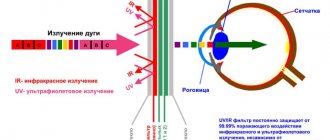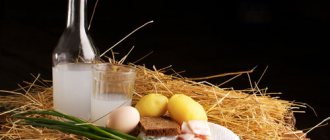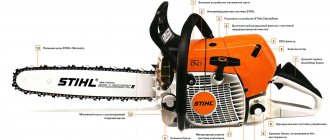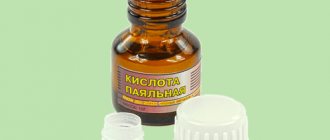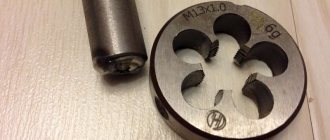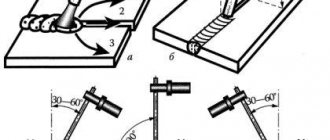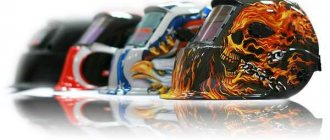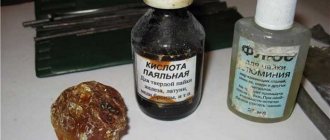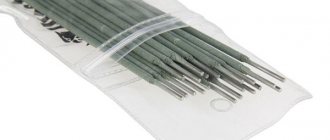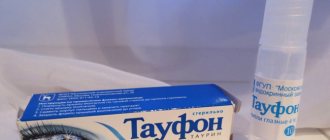It's easy and interesting to communicate here. Join us!
This is very dangerous, you don’t know now how much alcohol is in moonshine? How to use it now and in what doses.
Glass shards are dangerous.
There is nothing dangerous there other than fragments.
Our alcohol meter also broke a month ago. We threw it away. Nothing bad happened to us =) But it’s better to throw it away and buy a new one. It won't be of any use anyway)
In the process of preparing moonshine, the most important issues are the quality and strength of the product. How can we determine the strength (degree) of a product? To determine the strength, you can use a device called an alcoholometer, which is a type of hydrometer.
The functional feature of the alcohol meter depends on the purity of the solution obtained during distillation of the mash, i.e. the purer the water + alcohol solution, the more accurate the strength indicator of the resulting product. The most common type of alcoholometer model is made in the form of a glass float, the wide lower part of which is filled with a load of shot (usually lead) and filled with resin (some models use mercury)
,
and the upper narrow part contains a paper scale with divisions. There is a generally accepted division into laboratory and household alcohol meters.
Unlike a household alcohol meter, it has a high level of accuracy in determining alcohol strength. A household alcohol meter usually consists of one device that operates in the range of 0-96%. It differs from laboratory analogues in less accuracy. If all measurement conditions are met, the error is up to 0.5%. More suitable for beginner moonshiners. Let's take a closer look at a laboratory alcohol meter (what is it for and how to use it). In Russia, the most popular alcohol meters of this type, corresponding to GOST 18481-81, are the sets ASP-1 (11 pieces included), ASP-2 (18 pieces), ASP-3 (3 pieces) with different gradations. Most experienced moonshiners use the ASP-3 kit, which has a scale division price of 1%. The set consists of three hydrometers: 0-40%, 40-70% and 70-100%.
Initial conditions for carrying out measurements 1. The alcohol meter should be stored in its original packaging, without subjecting it to shaking or other mechanical influences that could affect its integrity and accuracy. Glass models are very fragile and break easily. If cracks, scratches or other defects appear, the device is damaged. 2. Most alcohol meters are calibrated to operate in a solution whose temperature is 20°C (deviation of no more than 0.5 degrees is allowed). It is important to remember that at higher temperatures the device begins to overestimate the strength, and at low temperatures it underestimates. Failure to comply with the temperature conditions causes a measurement error of up to 7%. The density of the liquid also depends on atmospheric pressure, the recommended value is 760 mm Hg. Art. How to measure strength with an alcohol meter 1. Dilute alcohol with water, wait 5-10 minutes until the intensity of the chemical reaction decreases (at this time a lot of heat is released). 2. Wipe the alcohol meter with a dry, clean cloth so that no greasy or dirty stains remain. The device must be completely dry before immersion in liquid. 3. Bring the solution temperature to the recommended one – 20°C. An approximate correction of alcohol meter readings depending on the temperature of the alcohol is shown in the table.
| Range (strength) | 5°C | 10°C | 15°C | 20°C | 25°C | 30°C | 35°C |
| 20-60% | +6% | +4% | +2% | — | -2% | -4% | -6% |
| 65-80% | +5% | +3% | +2% | — | -1% | -3% | -5% |
| 85%+ | +4% | +3% | +1% | — | -1% | -3% | -4% |
4. Pour the alcohol-containing liquid into a tall, narrow container of small volume (measuring flask, cylinder or beaker). 5. Lower the alcohol meter with its wide bottom part into the liquid in the middle of the vessel. If you throw it too quickly, the device may hit the bottom and break. The alcohol meter must not touch the walls of the vessel!
6. Wait for the alcohol meter to stabilize at the same level. If it sank, it means it is faulty or not designed for this strength. For example, the device operates in the range of 0-40%, but is dipped in 70% alcohol. 7. View the result. Depending on the design of the alcohol meter, readings are taken from the upper edge of the meniscus (red arrow) or from the lower edge (green arrow). This point must be indicated in the instructions. 8. Remove the alcohol meter from the volumetric flask, wipe it, and put it in the original storage case.
The hydrometer/alcohol meter is a sealed glass flask in the form of a float. In the wide lower part there is a weight, lead shot in resin or mercury. There is a scale in the upper narrow part. The alcohol meter is a capricious and fragile device; the slightest crack or chip affects the accuracy. If the integrity of the alcohol meter is damaged, it must be replaced. How to deal with a broken hydrometer.
If the weighting agent is shot in epoxy resin, fragments pose a great danger. Strain the product through a sieve and cheesecloth to get rid of shot and fragments.
The fraction is inconvenient. It is convenient to collect lead balls that have rolled on the table or floor with a magnet. From the series, what would happen if the hydrometer broke in a large container with a product. Is distillation required? No, distillation is not required, you just need to strain it thoroughly. Cotton pads, paper films for coffee, gauze folded several times, even disposable medical masks and caps are suitable for this.
If the broken alcohol meter turns out to be mercury, take measures according to the mercury collection situation. We strongly DO NOT recommend distilling or drinking alcohol after such an accident. We remind you that mercury is a toxic metal.
Source: rufus-rus.ru
Types of alcohol meters
First, before choosing an alcohol meter, you need to know which type is right for you. Possible options:
- A household alcohol meter is used to check the alcohol content from zero to ninety-six degrees in liquids such as vodka, moonshine, and so on.
- A shot glass, unlike a household appliance, measures the amount of alcohol content of an alcoholic drink in small containers such as shot glasses, shot glasses, and so on.
- Laboratory - this is the most high-precision device and is used in production and for scientific work.
- Optical - used to check the strength of alcoholic drinks containing sugar and various fruit liqueurs up to 40 degrees.
- A wine meter is used to check the alcohol content of wine. The device measures not only its amount in the product, but also how much sugar it contains. This alcohol meter is not suitable for testing strong drinks, because its reading scale is from 0 to 12% alcohol and from 0 to 25% sugar content.
Now about our favorite “degrees”.
In our time, this is a non-systematic, non-standard (not GOST), outdated unit and in our time it no longer means anything or means what any “clever” homemade moonshiner-Kulibin from the 19th – early 20th centuries can attribute to it.
In the 19th century, during the time of Dmitry Ivanovich, at the beginning of the 20th century, this unit corresponded to certain values. And not only massive, but also voluminous!! There were different calculation systems, if you are interested in details, look at the article from the journal “Issues of the history of natural science and technology” No. 2, 1999 “FROM THE HISTORY OF RUSSIAN SPIROMETRY”, L.B. Bondarenko.
You see, I didn’t even feel like drinking! - Well, where is it - without degrees? It's better to drink milk! Firstly, you have been confused by numerous calculations floating around the Internet: A liter of vodka with a strength of 40° contains 572 g of water and 381 g of grain ethyl alcohol. If the label of a bottle of vodka says 40% vol. (forty percent of the volume), then in a liter of such vodka (according to Father Dmitry Ivanovich Mendeleev) there are 635 g of water and only 318 g of grain ethyl alcohol, which is approximately 35°.
For 572 g of water - 381 g of alcohol - there is more alcohol here. – 40° For 635 g of water – 318 g of alcohol – this is less strong! – 40% or
35° In the first case, the vodka was 40 degrees, in the second - 40 percent. The first vodka is stronger and 40 degrees is not equivalent to 40 percent.
It makes you want to convert percentages into degrees, right? Don't count! In this passage there should be MASS fractions instead of degrees. Yes, there are volume percentages and there are mass percentages. Naturally, different results are obtained. But in the alcoholic beverage industry, mass fractions (when calculating alcohol content!) are not used. Volume percentage only! Secondly, William Pokhlebkin brought great confusion into our minds with his book about vodka (Pokhlebkin V.V. “The History of Vodka”).
Personally, I respect this man very much, but, unfortunately, he was not friendly with the exact sciences and wrote a lot of unnecessary (or rather incorrect) things, both about vodka and about Dmitry Ivanovich (see below). It is from him that this confusion with degrees, mass percentages still comes... Here you can write a lot about his mistakes, but it’s better to conclude:
We must remember: from the 70s of the 20th century to this day, designations on labels are indicated only in volume percentages, for example: 40% vol. Also, since that time, degrees have been mentioned out of inertia, but these degrees are equal to volume percentages, not mass percentages. Moreover, they often wrote back then: “forty proof vodka – 40°, that is, 40% vol.” That is, they said that it was the same thing.
Therefore, if some smart guy comes up to you and asks:
- How can we convert percentages into degrees? answer: “You are confusing, young man, degrees and mass fractions!” There are no degrees in official standards now. Everything is measured (in the liquor industry, written on labels) in percentages by volume. If you so want, you can convert the mass fractions into volume fractions, but this is only for personal self-affirmation and has nothing to do with the contents of the bottle. If you notice a designation in degrees on some bottles, then be sure that this is either left-handed/scorched vodka or illiterate (super illiterate) manufacturers who did not care about the standards. (Unfortunately, we have to admit that our time is the time of the illiterate, to say the least. This is where most of our troubles come from.)
Well, now for lovers of everything about Dmitry Ivanovich Mendeleev.
Here is what Pokhlebkin wrote:
While studying alcohol-water solutions, Mendeleev “noticed” their features and drew attention to their connection with the appearance of different qualities in different water-alcohol mixtures. It turned out that the physical, biochemical and physiological qualities of these mixtures are also very different, which prompted D.I.
Mendeleev to look for the ideal ratio of volume and weight of the parts of alcohol and water in vodka. While various volumes of water and alcohol were previously mixed, D.I. Mendeleev mixed various weight samples of water and alcohol, which was much more difficult and gave more accurate results. It turned out that the ideal alcohol content in water should be 40°, which was never obtained by mixing water and alcohol by volume, but could only be obtained by mixing exact weight ratios of alcohol and water.
That last sentence is absolute nonsense from a scientific point of view.
And, besides this, when mixing alcohol and water, everything goes smoothly on the full “section of the curve” and 40 percent or degrees do not stand out in any way on the graphs. Mendeleev in his works nowhere states that vodka should be exactly 40 degrees - no one has conducted “physical, biochemical and physiological” studies, so there is no ideal ratio!
How to choose an alcohol meter?
Choosing an alcohol meter is not difficult. First you need to decide what drinks you need it to measure. When purchasing, you need to check the integrity of the flask so that there is no damage to it: chips, cracks, and so on. It is important to buy the device in trusted places - at sales points specializing in the sale of laboratory supplies, in hardware stores or in online stores selling goods for the production of alcoholic beverages. You can also purchase a hydrometer in stores for car enthusiasts. People who have had the opportunity to use Russian and Chinese-made devices prefer domestic manufacturers.
How to use the device?
First of all, you need to wipe the device from greasy or dirty stains, and it should be immersed dry. To check the alcohol content in a liquid, you need to immerse the hydrometer in a tall container with alcohol-containing liquid. This should be done carefully; it is advisable to lower it to the very bottom of the container. Otherwise, if the alcohol content is high, the device may hit the bottom of the vessel and break.
The alcohol meter should be approximately in the center of the container, without touching the walls of the container. Next, you need to wait until the device rises to the surface and stops, then look at the scale that determines the alcohol content. To make measurements more accurate, the liquid temperature should be about 20 degrees. There are also devices with a mercury scale that shows the alcohol content.
What to consider when handling the device
It is necessary to understand that an alcohol meter is a rather fragile thing, so you should not leave it anywhere. It can easily be broken or crushed. It is best to store the device in the packaging in which it was supplied. If cracks and chips suddenly appear on the glass, then such a device can no longer be used.
Alcohol meters can measure the strength of only water-alcohol solutions that do not contain sugar, juice, or foreign substances that appear when infused with wood chips. All additional inclusions change the density of the drink, which ultimately makes measurements inaccurate.
General instructions on how to use an alcohol meter
By default, household hydrometers are configured to work with liquids with a temperature of 20 degrees. Therefore, before starting measurements, you should use a water thermometer. If the temperature is higher or lower, the accuracy of the measurements will decrease and you will have to calculate the amount of alcohol manually using the tables supplied with the device.
Before immersing the device in liquid, you need to wipe it and make sure that the flask is free of grease and dirt, as well as wet spots
When lowering the alcohol meter into alcohol, you need to make sure that it does not come into contact with the walls of a large container, which is also important for the accuracy of measurements.
How to use a household alcohol meter
How to use an alcohol meter with a 0-96 scale
This device is suitable for determining the strength of homemade moonshine and vodka. It is intended exclusively for use in water-alcohol, “pure” mixtures. Measurement algorithm:
The resulting moonshine should be diluted with water and left for 4-8 minutes to stabilize. Wipe the device with a dry and clean cloth. You should first use a water thermometer to make sure that the temperature of the liquid is 20 degrees. But even if it is more or less, it’s not so scary. The device usually comes with tables for correcting values; you can use them. Pour the moonshine into a tall narrow vessel, or into a regular glass. We immerse the wide part of the device in the liquid so that it does not touch the walls
You cannot let go of it - a sharp blow to the bottom can damage it. We carefully unclench our fingers and monitor the behavior of the “float” - the liquid should reach a certain mark on the scale. This will be the alcohol indicator. At the end, we take out the device, be sure to wipe it dry and put it in the packaging for storage.
You can watch the video on how to use an alcohol meter:
How to use the ASP 3 alcohol meter
This device has the same principle of operation as a household one, but shows greater measurement accuracy. It is manufactured according to GOST, which already indicates the proper level of quality. This option is the most popular among those who have been making home brews for a long time. It is not much more difficult to use than a household one.
- To increase the accuracy of the readings taken, it is recommended not to measure the strength of moonshine immediately after it has been diluted with water. It is better to wait about a day - during this time all chemical reactions in the drink will complete, releasing heat, and the temperature will be as close as possible to the required value - 20 degrees.
- We carefully wipe the device dry, making sure that there are no greasy stains on the surface.
- We measure the temperature of the liquid.
- We lower the device exactly in the middle of the vessel with moonshine, making sure that it does not touch the walls and bottom.
- We wait until the alcohol meter stabilizes, he should not drown. If this happens, then you need a model with a different range.
- We look at what level the liquid is at and note the resulting value.
- After work, we wipe the device again and carefully put it in the box.
How to use a wine alcohol meter
It is not possible to measure the strength of homemade wine, beer, liqueur, or mash with a conventional hydrometer. It's not designed for that. You need another device - a vinometer, which simultaneously determines the amount of alcohol and sugar in the drink. This is an indispensable thing for artisanal winemakers, which must be in the home arsenal.
Measurement process steps:
We fill a separate container with the finished product - you can use a measuring cup or a regular one, the main thing is that it is high enough, otherwise the liquid will overflow. Place the container on the table so that it stands level. Place the device in the drink - it should not come into contact with the walls. Carefully remove your hand - the “float” should hover in the liquid. Look at the scale - to what value the liquid has reached is the strength indicator.
Check for accuracy
You can check the accuracy of an alcohol meter at home by comparing the readings of several devices, or by comparing the alcohol meter readings with the indicated alcohol content on the label of a quality product. But do not forget that the temperature of the substance being measured should be twenty degrees; when it changes, the instrument readings also fluctuate. And also in drinks containing added sugar and fruit liqueurs, the hydrometer will show incorrect results.
Methods for determining the strength of alcohol
Experienced distillers have their own methods that help them, without instruments, so to speak, “by eye,” determine the quality of the drink.
It is quite difficult to check their accuracy, since the methods do not provide accurate information, but only indirectly indicate the number of degrees contained in alcohol. But nevertheless, such methods are considered relatively accurate and, in the absence of the necessary equipment, they can be used. How to find out about alcohol strength:
Pervach, or pervak, which is distinguished by high strength levels, will give itself away with a specific smell. In addition, drops of such moonshine will roll along the bottom of a glass jar - this means that the strength of the drink reaches 80 degrees. Quality is determined in a simpler way - the moonshine is simply set on fire. You can blot the distillate with a napkin and then simply set it on fire. If the napkin burns and the fire does not go out, the flame is even and burns blue, in this case the strength of the drink in degrees is not lower than 40. If you soak the napkin with moonshine, set it on fire and the fire burns unevenly, goes out or “blinks,” then the strength of the drink is below 40 degrees, but not less than 20. If the test is carried out during fractional distillation, then the drop in degree is perceived as a sign that it is necessary to begin selecting the “tails”. The “tails” are taken away until the napkin somehow burns. You can simply pour moonshine into a spoon and set it on fire
This method is used instead of checking with a napkin, paying attention only to the fire.
Not only fire, but also a visual assessment will help you recognize strong alcohol.
You can focus on color and smell:
- If a drink has a pronounced aroma, a sharp, specific smell, then its strength is quite high or it is of low quality. If the aroma is not so pronounced, then we can say that the strength of the drink is falling. A faint smell indicates that the strength of the moonshine has dropped.
- The process of determining the quality characteristics of a distillate produced at home has one more component - a visual assessment of the transparency of the drink. If the moonshine is not cloudy, then its strength is very high. If the alcohol is cloudy and does not have a pungent odor, then its quality is questionable.
- During the measurement process, you can resort to one more trick - tasting the drink. This will help you form a definite opinion about the degrees without using any instruments.
There is an opinion that the purest alcohol “like a baby’s tear”, which is also the strongest, is perceived by distillers as an indicator of the quality of the distillate. In reality this is a little different. Diluted moonshine can also be pure, but a cloudy drink can have incredible quality indicators.
DIY alcohol meter
However, if there is no opportunity or desire to buy such a device, then you can make it yourself. And we can say with confidence that homemade alcohol meters are not much inferior to factory instruments.
From a ballpoint pen
To make such a device you will need:
- a ballpoint pen case (the simplest one) no more than 14 centimeters in length;
- a plastic container for nasal drops and small shot (you can also use finely chopped steel wire or finely chopped lead for weight).
The following is done:
- The lower part of the handle is cut off by half a centimeter.
- To make it easier for the pen case to fit into the neck of the drop bottle, you need to hold it in hot water.
- The pen case is carefully screwed into the neck of the bottle.
- The workpiece is lowered into a container with warm water and a weighting agent is loaded through the upper hole until it is immersed in water one and a half to two centimeters from the neck. A mark is made on the case (it will be 0).
- Carefully bury the glue inside to fix the weighting material and screw the cap tightly.
- The alcohol meter is immersed in a container with 40-degree vodka. Mark 40.
- Use a ruler to measure the distance from 0 to 40 and divide by 40. This reading will correspond to one degree.
- Using the data obtained, a scale is formed. The alcohol meter is ready.
How to use an alcohol meter correctly - instructions and nuances
Most of the fantastic results of beginners, for example, distilled moonshine at 98 degrees, or 0% alcohol in a brew that was actively fermented and drained, are explained by the incorrect use of measuring devices. If you dip a hydrometer in any liquid that does not contain alcohol, the device will still show a certain strength value, since it gives a result based on density. I'll tell you how to use an alcohol meter to always get the correct readings. Despite the external primitiveness and simplicity of the design, there are many nuances in the work.
An alcohol meter is a type of hydrometer (a device that measures the density of liquids) designed to determine the amount of ethyl alcohol in a solution consisting of alcohol and water without other impurities that can affect the density.
Most models are made in the form of a glass float, the wide lower part of which is filled with a weight of shot and filled with resin (some models use mercury), and the upper narrow part contains a paper scale with divisions.
Analogues of this product
The group (Teplopribory, Prompribor, Teplokontrol, etc.) is instruments and automation for measuring, monitoring and regulating the parameters of technological processes (flow metering, heat control, heat metering, control of pressure, level, properties and concentration, etc.).
https://www.youtube.com/watch?v=ytpressen-GB
Geography of Teplopribor Group of Companies: Moscow, Ryazan, Chelyabinsk, Kazan, Yekaterinburg, St. Petersburg, Novosibirsk, Nizhny Novgorod, Samara, Rostov-on-Don, Ufa, Krasnoyarsk, Perm, Voronezh, Belgorod, Volgograd, Krasnodar, Saratov, Tyumen , Tomsk, Omsk, Irkutsk, Ulan-Ude, Saransk, Cheboksary, Yaroslavl and other cities of the Russian Federation, we also work with Belarus, Ukraine and Kazakhstan.
Types of alcohol meters
Laboratory - a professional hydrometer for determining the strength of a solution with a high degree of accuracy. In Russia, the most popular alcohol meters of this type, corresponding to GOST 18481-81, are the sets ASP-1 (11 pieces included), ASP-2 (18 pieces), ASP-3 (3 pieces) with different gradations.
Most experienced moonshiners use the ASP-3 kit, which has a scale division price of 1%. The set consists of three hydrometers: 0-40%, 40-70% and 70-100%. This is enough to make homemade alcohol. ASP-1 and ASP-2 have a gradation of 0.1%.
ASP-3 set
Household - alcoholometer for measuring the strength of alcohol, vodka or moonshine at home. Typically consists of a single device operating in the 0-96% range. It differs from laboratory analogues in less accuracy. If all measurement conditions are met, the error is up to 0.5%. Suitable for beginner moonshiners.
The most affordable household alcohol meter
Digital (electronic) - works according to a different algorithm than traditional hydrometers. It is characterized by high accuracy of readings and fast response of the sensor. Additionally, most devices are equipped with a thermometer. The disadvantage is the high price.
Optical - used to determine the concentration of alcohol in a multicomponent solution (water, ethyl alcohol and other additives). Suitable for wines and liqueurs. It works according to a special algorithm, but in a narrower range (usually from 0 to 25 or 40 degrees).
Which Alcohol Meter More Accurately and Better Measures the Degree of Moonshine I Conduct an Experiment
What is the best way to measure the degree in moonshine?
There are two main types of alcohol meters. A household alcohol meter and an ASP alcohol meter (a hydrometer designed to measure the concentration of alcohol in water), these are what sellers recommend buying in stores for moonshiners. For the experiment, I took about twenty household alcohol meters and the same number of ASP-3. I was wondering how accurately they show and whether it makes sense to buy an expensive (laboratory) ASP instead of a cheap household alcohol meter. On a household alcohol meter, the scale ranges from 0 to 96 degrees. In the laboratory (ASP-3), the scale from 0 to 100 is divided into three different hydrometers. The first one measures from 0 to 40 degrees, the second one measures from 40 to 70 degrees, and accordingly the third one measures from 70 to 100 degrees. This is done for a more accurate measurement. These are the most popular types of alcohol meters that can now be purchased. Therefore, I decided to compare these alcohol meters with each other.
Let's start with household alcohol meters. These are probably the most popular alcohol meters that a novice moonshiner buys. These alcohol meters are also often given as a gift when purchasing a moonshine still.
How to take measurements correctly? Rule for making the correct measurement: The temperature of the alcohol-containing liquid or moonshine should be twenty degrees Celsius. It is at this temperature that the alcohol meter readings are correct. The colder the moonshine, the less the alcohol meter will show, and vice versa, the warmer the more.
In our experiment, I will not try to accurately determine the degree of moonshine. I'll just check how different the readings are from different alcohol meters.
Source
Initial conditions for measurements
1. The alcohol meter should be stored in its original packaging, without subjecting it to shaking or other mechanical influences that could affect its integrity and accuracy. Glass models are very fragile and break easily. If cracks, scratches or other defects appear, the device is damaged and requires replacement.
2. Most alcohol meters are calibrated to operate in a solution whose temperature is 20°C (deviation of no more than 0.5 degrees is allowed). At higher temperatures, the hydrometer overestimates the strength, at low temperatures it underestimates. Failure to comply with the temperature conditions causes a measurement error of up to 7%. The density of the liquid also depends on atmospheric pressure, the recommended value is 760 mm Hg. Art.
3. All alcohol meters (except optical, electronic and wine meters) are designed to work with liquids containing only ethyl alcohol and water. Any other impurities (sugar, juice, tannins after infusion in a barrel, heavy metal salts in water and even fusel oils of poorly purified moonshine) change the density of the solution, leading to inaccurate measurements.
How to measure strength with an alcohol meter
1. Dilute the alcohol with water, wait 5-10 minutes until the intensity of the chemical reaction decreases (at this time a lot of heat is released).
2. Wipe the hydrometer with a dry, clean cloth so that no greasy or dirty stains remain. The device must be completely dry before immersion in liquid.
3. Bring the solution temperature to the recommended one – 20°C.
An approximate correction of alcohol meter readings depending on the temperature of the alcohol is shown in the table; the calculation can be done using a calculator.
Source
Alcohol meters and their types
The design of the alcohol degree meter depends on its type. There are mechanical (glass), electrical (metal) and optical.
The last type of alcoholometer will measure the strength of wine with the greatest accuracy. In addition, it allows you to determine the amount of sugar in the drink. This is specifically a wine alcoholometer; other types are not suitable here.
Metal
It works on the principle of changing the resistance of a thermal element located in a metal tube. It has a hole where the evaporated steam enters during the distillation of the mash. After this, the readings are displayed on the electronic display.
Its peculiarity is that you can immediately measure the alcohol strength and temperature in the cube. A hydrometer for moonshine is considered the most accurate of all.
Glass
The mechanical household version is a glass vessel with a weight filled with resin in the lower part. The flask narrows towards the top, and there is also a scale with divisions that show the degree of alcohol.
What are they?
- Laboratory - designed to measure the volume of alcohol in mixtures from which various household products are made. Such a device is quite accurate, so it is usually used for professional determination of the strength of a solution. It works with very high precision. This type of hydrometer has three varieties - it determines the percentage of alcohol from 0% to 40%, from 40% to 70% and from 70% to 100%.
- Household - used to determine the percentage of alcohol in liquids at home. It is a glass vessel with mercury in the lower part. At the top there is a scale that immediately shows the percentage of alcohol content in the liquid. When using it, certain conditions must be observed. Firstly, the solution temperature should be 20 degrees! Secondly, besides water, there should be no impurities in the liquid! Thirdly, the hydrometer should not touch the walls of the container in which the measurement is being made!
- Electronic (digital) is good because its indicators are much more accurate than a regular hydrometer with a scale. However, the cost of this option will be slightly more expensive. Electronic is characterized by stable operation and fast sensor response.
- Optical - used to determine the concentration of ethyl alcohol in a water-containing mixture or multicomponent solution. And also to account for alcohol during its production. The amount of alcohol in this device is calculated according to a specific algorithm embedded in the microprocessor program. The temperature range of measured liquids in an optical alcoholometer is wider (than in a household one), it ranges from plus 5 and inclusive to plus 40 degrees.
- Universal is an unpretentious and convenient device for determining the strength of any liquid containing alcohol. The scale of such a hydrometer has a scale from 0 to 96 degrees.
- A glass hydrometer is a compact hydrometer for determining strength in a small vessel, for example, a glass. The scale available in such a device (0-80 g) allows you to determine the alcohol content in the liquid with maximum accuracy.
- A wine meter is a type of alcoholometer that is used to determine the strength of wines, as well as the amount of sugar in the drink. This device is used in everyday life and is an invariable companion of any winemaker.
Rules for using an alcohol meter
To measure correctly, you need to follow some simple rules. The accuracy of the readings will depend on their compliance:
- If the alcohol has just been diluted with water, wait a few minutes until the reaction takes place.
- Before use, make sure that the device is dry and clean. If not, wipe it carefully with a rag.
- It is desirable that the temperature of the liquid is close to 20°C. If it is not possible to carry out measurements under such conditions, you need to take into account the dependence of the alcohol density results on temperature according to the table.
- Immerse the hydrometer slowly and strictly in the middle, without touching the edge of the container and its walls.
Following the recommendations will allow you to measure degrees correctly with an alcohol meter. The need for further distillation or the waiting time for the end of fermentation depends on this.
How does temperature affect: table
When taking measurements, it is necessary to look at the readings of a thermometer lowered into the liquid in advance. Keep in mind that the strength of moonshine varies greatly depending on the temperature.
| Alcohol percentage/°C | 5 | 10 | 15 | 20 | 25 | 30 | 35 |
| From 20 to 60% | +5 | +3 | +1 | — | -1 | -3 | -5 |
| From 65 to 80% | +4 | +2 | +1 | — | -2 | -2 | -4 |
| From 85% and above | +3 | +2 | — | — | -2 | -2 | -3 |
- The higher the temperature, the lower the alcohol content in the liquid.
- The more alcohol evaporates, the longer it takes to heat the liquid.
- The dependence of strength on temperature is exactly the same as that of alcohol content.
Be sure to adjust the alcohol meter readings depending on the temperature using the table. In this case, it is better to double-check these fortresses.
So what, I will never know how many degrees there are in my tincture?
Accurate to the nearest degree - never. But fortunately, we are not Medeleev professors writing dissertations on metrology, but home winemakers and moonshiners, who care, first of all, about the taste and organoleptic characteristics of the drink. In other words, if we are talking about the strength of the tincture-liquor-liqueur, approximate, calculated data will be enough. So you need to rely on your own calculations and feelings - you want it to be less strong, just add water, what’s wrong with that? Just remember to give this drink an extra couple of weeks of rest before drinking.
However, there is a special type of alcohol meters called “optical”. These are complex and expensive devices, most often with a limited range of measurements (usually 0-40° or slightly higher), but they are capable of determining both the amount of alcohol and the amount of sugar in a drink. But experienced winemakers say that everything is not clean here either. They say that an optical alcohol meter accurately measures only liquids consisting of water, alcohol and sugar, and other impurities seriously reduce the adequacy of measurements. In general, the same troubles, only in profile.
The density of the finished product is calculated based on the ingredients included in its composition. For example, you prepared using a liter of 70-proof alcohol. Let's say that the dried root of the degree was almost not stolen. Then we diluted the tincture with half a liter of water - the strength was about 46-47 degrees. And then they sweetened it with a syrup made from 100 ml of water and 100 ml of sugar - from the water the strength dropped by another three degrees, the sugar “ate” about the same amount - after all, the volume of the drink increased. The estimated strength of the drink is 40-41 degrees. The situation is much more complicated with tinctures made from berries - dried ones actively absorb alcohol, fresh ones contain a lot of water, reducing the alcohol strength by an average of 10-15 percent, or even more, depending on the juiciness and structure of the fruit. In general, the devil will break his leg.
Instructions for use
To ensure correct measurements, you must follow the instructions:
- Dilute the alcohol with water and wait for the reaction to complete.
- Wipe the alcoholmeter with a dry and clean cloth.
- Measure the temperature of the solution to adjust the readings.
- Pour the alcohol-containing liquid into a small container (preferably glass).
- Lower the alcohol meter in the middle of the vessel with the wide part down. Under no circumstances should you do this abruptly, as it may fall to the bottom and break.
- Wait until the device calms down and check the readings. If it drowns, you should use another one, which is intended for stronger drinks.
After the measurements, look at the instructions that are in the alcohol meter (or find a photo of it on the Internet), there is a table with the results. If necessary, adjust the data on the table of alcohol content depending on temperature. At the end, the alcohol meter is wiped and put into its case.
We determine the strength depending on the temperature in the cube
Most industrial stills are equipped with a thermometer, which is used to monitor the heating temperature of the mash. If you know something about temperature indicators, you can determine when the first drops will begin to drip, when you can finish selecting the “heads” and to what level the “body” should be driven.
- At 88 - 89°C, the alcohol begins to evaporate, that is, a trickle of alcohol is about to flow. As soon as you notice the first drops in the tube attached to the coil (transparent silicone tubes are most often used now), turn down the heat or switch the stove to a lower mode; you should not sharply heat the mash any further, otherwise foam may erupt.
- Select the tails (this is approximately 10% of the expected amount of moonshine) and begin to distill the main part (the body). When you see that the thermometer needle has reached the number 95, it means that the strength of the outgoing liquid is now around 40°.
- The needle moves further, and somewhere at 97°C you need to remove the jar with the main distillate and either take away the tails until the temperature rises to 98°C, or stop distilling.
Having analyzed the coincidence of the temperature in the cube and the strength of the distillate several times, you will know exactly how many degrees the liquid has that is currently flowing into the jar you placed.
How to check for accuracy
To test your alcohol hydrometer for accuracy at home, you can use a reputable brand of vodka. Or they take several devices so that they can compare the readings: if the results are the same, then the devices are accurate. If they differ, you can buy an alcohol-containing liquid in the store, which will indicate the percentage of alcohol. It allows you to check your alcohol meter more accurately. Be sure to take into account the dependence of alcohol strength on temperature.
An alcohol meter is one of the types of hydrometers. It is quite often used in everyday life and in industry. With its help, ordinary winemakers and moonshiners, as well as large factories, can prepare formulations with a certain alcohol content.
Source

